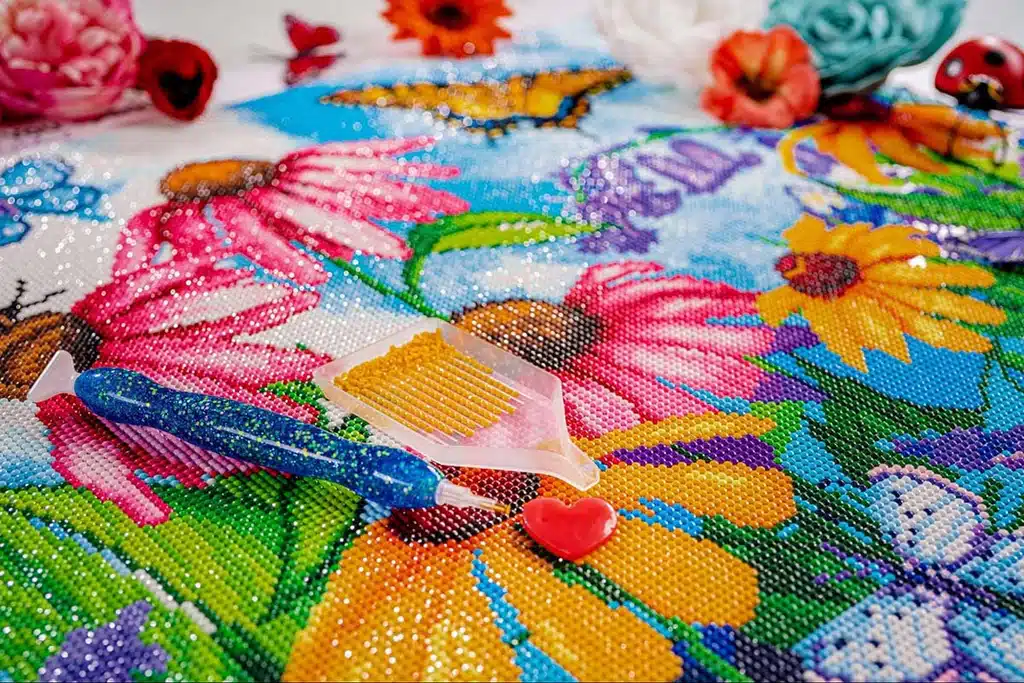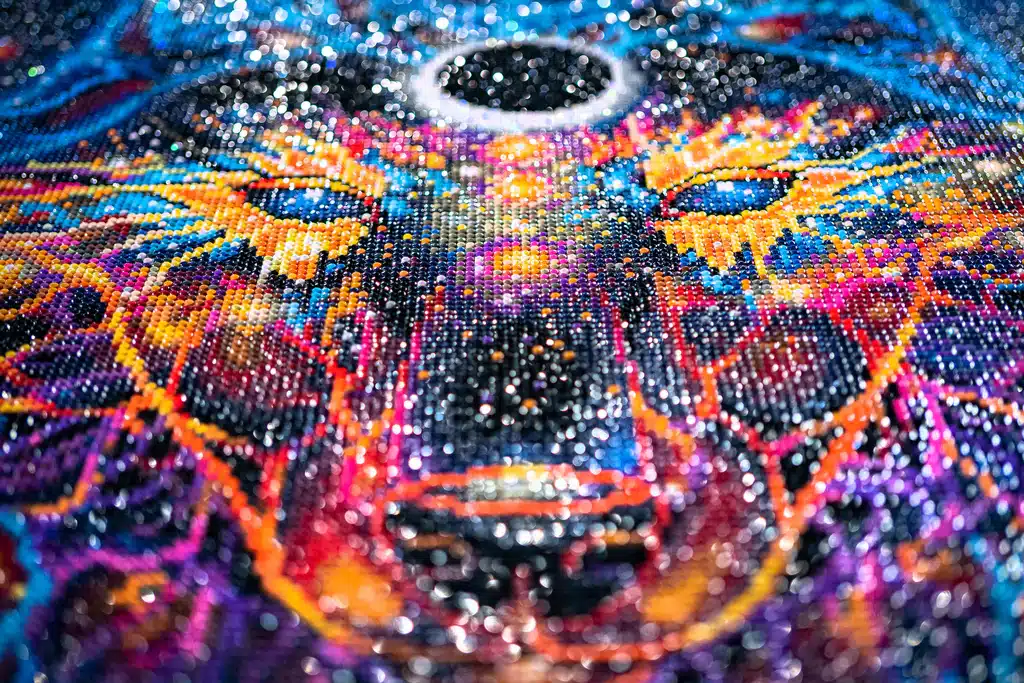Diamond painting combines the appeal of paint-by-numbers with the sparkle of cross-stitch, creating a mesmerizing craft experience. Starting a relaxing diamond painting project can provide both creative satisfaction and stress relief, making it an excellent choice for crafters seeking a new hobby. The process involves placing tiny resin diamonds onto a coded adhesive canvas to create stunning mosaic-like artwork.
This emerging craft has gained popularity for its straightforward approach and therapeutic benefits. Crafters use a special applicator tool to pick up and place colourful resin pieces, called drills, onto a pre-printed canvas. Each completed [Diamond Painting Kits for Adults] transforms into a shimmering piece of art that can brighten any space.
The craft requires minimal artistic skills while offering maximum creative enjoyment. Whether choosing square or round drills, beginners can easily master the basic techniques and progress to more complex designs. The methodical nature of diamond painting helps quiet the mind while producing beautiful results.
Key Takeaways
- Diamond painting combines simple techniques with stunning results for crafters of all skill levels
- The methodical process offers stress relief and creative fulfillment
- Each project produces a unique, sparkly artwork suitable for display or gifting
Understanding Diamond Painting

Diamond painting combines elements of paint-by-numbers and cross-stitch to create sparkling mosaic artwork by placing tiny resin diamonds onto an adhesive canvas.
What Is Diamond Painting?
Diamond painting is a craft activity where artists place small, faceted resin pieces called “drills” onto a pre-coded adhesive canvas. The process follows a numbered system similar to paint-by-numbers.
Each colour corresponds to a specific symbol on the canvas, creating a detailed image when completed. The finished piece sparkles like a mosaic due to the reflective surfaces of the drills.
The craft originated in China and gained popularity in North America around 2017. Artists can create landscapes, portraits, abstract designs, and other artwork using this technique.
The Components of a Diamond Painting Kit
A standard diamond painting kit includes several essential tools:
- Adhesive Canvas: Pre-printed with symbols and protected by a clear film
- Resin Drills: Colour-coded diamond-shaped pieces
- Applicator Pen: Tool for picking up and placing drills
- Wax Pad: Helps the applicator pen grip the drills
- Plastic Tray: Holds and organizes drills while working
- Diamond Organizer: Optional storage container for sorting drills
The canvas features a sticky surface that secures the drills permanently once placed. Most kits include detailed colour charts matching symbols to drill colours.
Types of Diamond Painting Drills
Diamond painting drills come in two main varieties: round and square.
Round Drills:
- Easier to pick up and place
- Leave small gaps between pieces
- Better for beginners
- Create a softer visual effect
Square Drills:
- Fit together seamlessly
- Provide fuller coverage
- Require more precise placement
- Create a cleaner, more uniform appearance
The size of drills typically ranges from 2.5mm to 2.8mm. Higher-quality kits feature drills with consistent sizing and more facets for better sparkle.
Evaluating the Pros and Cons of Diamond Painting

Diamond painting combines elements of cross-stitch and paint by numbers to create sparkling artwork using tiny resin gems. This craft has gained popularity for its accessibility and unique finished results.
The Pros
Diamond painting offers genuine therapeutic benefits through its meditative nature. The repetitive motion of placing gems promotes mindfulness and reduces stress.
The craft requires minimal artistic skill to create impressive results. Beginners can start producing beautiful pieces immediately by following the colour-coded patterns.
Many crafters report improved hand-eye coordination and concentration after regular diamond painting sessions. The precise placement of tiny gems helps develop fine motor skills.
The social aspect adds significant value through active online communities. Crafters share tips, showcase works, and connect with fellow enthusiasts worldwide.
The Cons
Quality varies significantly between manufacturers. Some cheaper kits contain dull gems, weak adhesive, or unclear patterns.
Storage space becomes an issue as completed works accumulate. Large canvases require considerable wall space for display.
The cost of premium kits from licensed sellers like Diamond Art Club or Diamond Dotz can be substantial. Quality materials and legitimate artwork licensing contribute to higher prices.
Some crafters experience eye strain during long sessions. Proper lighting and a light pad are essential investments for comfort.
Tips and Tricks for Enhanced Experience
Start with a small canvas to learn basic techniques. A 30x30cm piece offers enough detail without overwhelming new crafters.
Use proper tools: quality applicators, diamond storage containers, and a light pad improve accuracy and comfort.
Keep the workspace clean and organized. A tidy area prevents gem loss and maintains the canvas adhesive.
Apply gentle pressure when placing gems. Too much force can damage the sticky surface or crack the diamonds.
Take regular breaks to prevent fatigue. Short sessions help maintain precision and enjoyment of the craft.
Conclusion
Diamond painting offers a creative outlet that combines the meditative aspects of cross-stitch with the sparkle of mosaic art. The craft provides an engaging way to create stunning artwork while developing patience and focus through its methodical nature.
The accessibility of starter kits and straightforward techniques makes it an appealing choice for crafters at any skill level. Those seeking a relaxing yet rewarding hobby will find diamond painting strikes an excellent balance between challenge and achievability.

